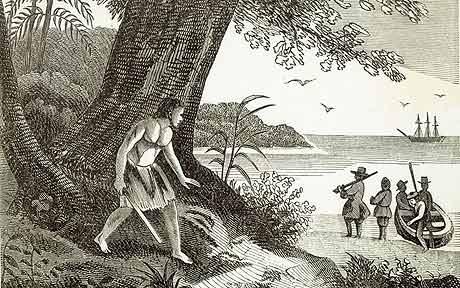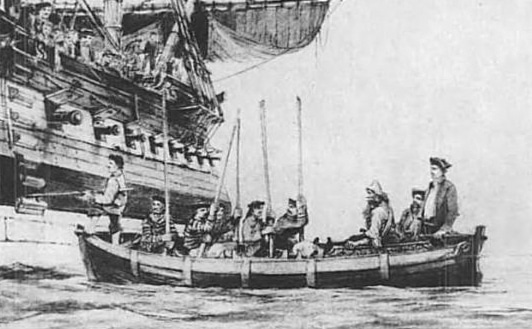Twice Selkirk had his spirits lifted when vessels appeared at his shores and twice he had his spirits dashed. Both sets of visitors were Spanish. Selkirk was both a privateer and a Scottish fella so the treatment he would have received by them would have been much worse than what the island had to offer. The second set of visitors actually spotted him and chased him into the forest. Selkirk knew his way around the islands and managed to shake them off and they left frustrated.

Rescue finally came in 1709, after four years and four months alone on that speck of land. When the crew of the Duke and Duchess arrived to greet him he was apparently incoherent with joy, a babbling ball of relief. Whilst the crew rested on the island Selkirk showed his skills at hunting by catching two or three goats a day. This helped restore the scurvy afflicted men to good health.
Captain Rogers of the Duke reported how impressed he was by the sense of calm that the island had given him and by his physical fitness. He wasn’t a shrivelled husk of a man at all. It appeared he had thrived.

One might think that an experience of hardship like that might dampen one’s affection for the ocean. But not in Selkirk’s case. He was straight back out to sea, commanding ships and robbing fineries off of wealthy Spanish folk. He also completed a round-the-world voyage before finally arriving in England in 1711, having been away for eight years.
☛ Up Next: Cargo Cults — Humans Will Believe Anything















